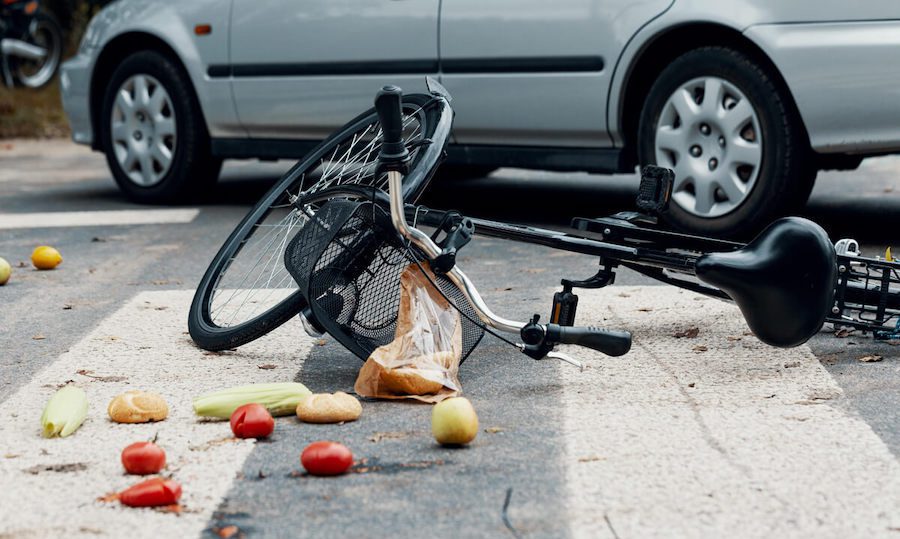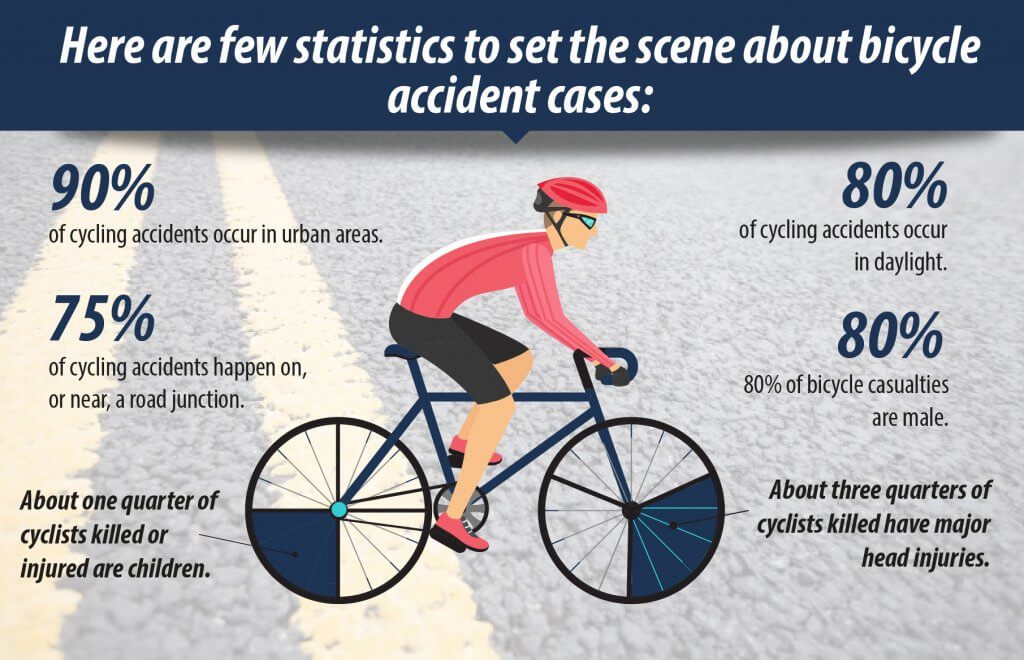 There are more cyclists on the road now than ever before, which means drivers are increasingly faced with having to share the roadway. In fact, according to the National Highway Traffic Safety Administration, the number of regular riders grew from 47.5 million in 2017 to more than 52.7 million in 2020, with no signs of the trend slowing down. With more cyclists on the road, it has also translated into more bicycle accidents.
There are more cyclists on the road now than ever before, which means drivers are increasingly faced with having to share the roadway. In fact, according to the National Highway Traffic Safety Administration, the number of regular riders grew from 47.5 million in 2017 to more than 52.7 million in 2020, with no signs of the trend slowing down. With more cyclists on the road, it has also translated into more bicycle accidents.
How Many Cyclists Suffer Injuries Occur Each Year?
NHTSA reported 49,000 injuries from traffic-related cycling accidents in 2021, representing a 5.4 percent increase from 2020. In the aggregate, it represents about two percent of all preventable traffic injuries in the U.S.; bicyclists make up less than one percent of all traffic participants.
What Accounts for The Upward Trend in Bike Accidents?
While fatalities have dropped over the last two years –most experts attribute the decline to decreased traffic during the height of the COVID-19 pandemic – injuries and bike accident reports have risen steadily over the last decade. Many factors have possibly contributed to the increase, including:
- Cycling continues to grow in popularity (meaning more inexperienced cyclists are on the roads).
- Drivers are not looking out for cyclists and do not share the road properly.
- Municipalities have been slow to recognize the threat bicyclists face, meaning safety measures like dedicated bicycle lanes have not been installed at the same pace as the number of bicyclists.
Of course, there are steps bicyclists should take to reduce their risk of being seriously hurt in accidents, including wearing helmets, following the rules of the road, and avoiding high-risk areas.
 What are the Most Common Causes of Bicycle Accidents?
What are the Most Common Causes of Bicycle Accidents?
- Drivers Not Paying Attention to Cyclists; NHTSA data shows that 30 percent of all bicyclist injuries result from cars striking them, and driver distraction is the most common reason.
- Dangerous Road Conditions; roadways are not always safe for bicyclists and the responsibility falls on local municipalities to maintain dedicated bike lanes. However, NHTSA reports 13 percent of all cycling accidents resulting in injuries are due to unsafe road conditions, often due to the negligence of public entities responsible for maintaining the streets.
- Drivers Fail to Consider Bicycles as Vehicles; motor vehicle operators must afford bicycles the same space and right-of-way as they do cars and trucks. More than 20 states have passed a “three-foot rule,” which requires drivers to allow at least three feet of space between their vehicle and a bicycle on the road.
- Alcohol; More than one-third of fatal bicycle crashes involved alcohol in the system of either the driver or cyclist. Intoxicated driving rose during the pandemic, increasing the chances drunk drivers either failed or were indifferent to cyclists, causing severe injuries or death.
What You Should Do After a Bicycle Accident?
If you are a cyclist involved in an accident, attend first and foremost to your health. Get checked out by a doctor immediately and actively participate in any treatments your doctor recommends. In addition, make sure to attend all follow-up appointments and keep any records you receive.
As soon as you can, create a detailed statement of your experience in the accident while the details are still fresh in your mind. This statement will form a useful reference for any legal counsel you may secure and claim you make. Moving forward, keep a journal detailing your recovery and how your injuries affect you every day.
Do You Need an Attorney?
Seeking counsel after an injury-causing crash is always a smart move if you have been the injured party. Injuries from bicycle accidents are often severe. You may need expensive medical treatment, may lose work, and experience significant income loss as a result of your injuries.

